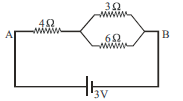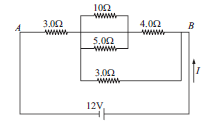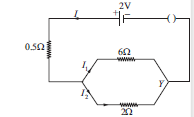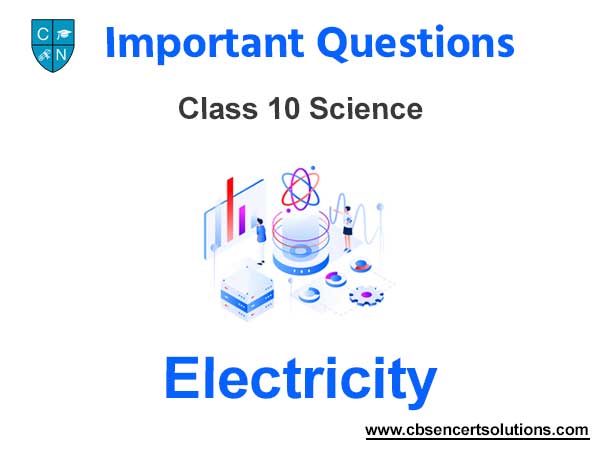CBSE NCERT Solutions
NCERT and CBSE Solutions for free

Case Study Chapter 12 Electricity
Please refer to Chapter 12 Electricity Case Study Questions with answers provided below. We have provided Case Study Questions for Class 10 Science for all chapters as per CBSE, NCERT and KVS examination guidelines. These case based questions are expected to come in your exams this year. Please practise these case study based Class 10 Science Questions and answers to get more marks in examinations.
Case Study Questions Chapter 12 Electricity
Case/Passage – 1
Two tungston lamps with resistances R1 and R2 respectively at full incandescence are connected first in parallel and then in series, in a lighting circuit of negaligible internal resistance. It is given that: R 1 > R 2 .
Question: Which lamp will glow more brightly when they are connected in parallel? (a) Bulb having lower resistance (b) Bulb having higher resistance (c) Both the bulbs (d) None of the two bulbs
Question: Which lamp will glow more brightly when they are connected in series? (a) Bulb having lower resistance (b) Bulb having higher resistance (c) Both the bulbs (d) None of the two bulbs
Question: If the lamp of resistance R 2 now burns out and the lamp of resistance R1 alone is plugged in, will the illumination increase or decrease? (a) Illumination will remain same (b) Illumination will increase (c) Illumination will decrease (d) None
Question: If the lamp of resistance R 1 now burns out, how will the illumination produced change? (a) Net illumination will increase (b) Net illumination will decrease (c) Net illumination will remain same (d) Net illumination will reduced to zero
Question: Would physically bending a supply wire cause any change in the illumination? (a) Illumination will remain same (b) Illumination will increase (c) Illumination will decrease (d) It is not possible to predict from the given datas
Case/Passage – 2
The rate at which electric energy is dissipated or consumed in an electric circuit. This is termed as electric power, P = IV, According to Ohm’s law V = IR We can express the power dissipated in the alternative forms P =I 2 R=V 2 /R
If 100W – 220V is written on the bulb then it means that the bulb will consume 100 joule in one second if used at the potential difference of 220 volts. The value of electricity consumed in houses is decided on the basis of the total electric energy used. Electric power tells us about the electric energy used per second not the total electric energy. The total energy used in a circuit = power of the electric circuit × time.
Question: Which of the following terms does not represent electrical power in a circuit? (a) I 2 R (b) IR 2 (c) VI (d) V 2 /R
Question: Two conducting wires of the same material and of equal lengths and equal diameters are first connected in sereis and then in parallel in an electric circuit. The ratio of heat produced in series and in parallel combinations would be– (a) 1 : 2 (b) 2 : 1 (c) 1 : 4 (d) 4 : 1
Question: In an electrical circuit, two resistors of 2Ω and 4Ω respectively are connected in series to a 6V battery. The heat dissipated by the 4Ω resistor in 5s will be (a) 5 J (b) 10 J (c) 20 J (d) 30 J
Question: In an electrical circuit three incandescent bulbs. A, B and C of rating 40 W, 60 W and 100 W, respectively are connected in parallel to an electric source. Which of the following is likely to happen regarding their brightness? (a) Brightness of all the bulbs will be the same (b) Brightness of bulb A will be the maximum (c) Brightness of bulb B will be more than that of A (d) Brightness of bulb C will be less than that of B
Question: An electric bulb is rated 220V and 100W. When it is operated on 110V, the power consumed will be– (a) 100 W (b) 75 W (c) 50 W (d) 25 W
Case/Passage – 3
Answer the following questions based on the given circuit.

Question: The equivalent resistance between points A and B is (a) 7Ω (b) 6Ω (c) 13Ω (d) 5Ω
Question: The potential drop across the 3Ω resistor is (a) 1 V (b) 1.5 V (c) 2 V (d) 3 V
Question: The current flowing through in the given circuit is (a) 0.5 A (b) 1.5 A (c) 6 A (d) 3 A
Case/Passage – 4
Answer the following questions based on the given circuit.

Question: The current through each resistor is (a) 1 A (b) 2.3 A (c) 0.5 A (d) 0.75 A
Question: The equivalent resistance between points A and B, is (a) 12 Ω (b) 36 Ω (c) 32 Ω (d) 24 Ω
Question: The potential drop across the 12Ω resistor is (a) 12 V (b) 6 V (c) 8 V (d) 0.5 V
Case/Passage – 5

Question: The equivalent resistance between points A and B (a) 6.2 Ω (b) 5.1 Ω (c) 13.33 Ω (d) 1.33 Ω
Question: The current through the 4.0 ohm resistor is (a) 5.6 A (b) 0.98 A (c) 0.35 A (d) 0.68 A
Question: The current through the battery is (a) 2.33 A (b) 3.12 A (c) 4.16 A (d) 5.19 A
Case/Passage – 6

Question: The total resistance of the circuit is (a) 2 Ω (b) 4 Ω (c) 1.5 Ω (d) 0.5 Ω
Question: The current flowing through 6Ω resistor is (a) 0.50 A (b) 0.75 A (c) 0.80 A (d) 0.25
Question: The current flowing through 0.5Ω resistor is (a) 1 A (b) 1.5 A (c) 3 A (d) 2.5 A
Case/Passage – 7
Ohm’s law gives the relationship between current flowing through a conductor with potential difference across it provided the physical conditions and temperature remains constant. The electric current flowing in a circuit can be measured by an ammeter. Potential difference is measured by voltmeter connected in parallel to the battery or cell. Resistances can reduce current in the circuit. A variable resistor or rheostat is used to vary the current in the circuit.

Question. Which type of conductor is represented by the graph given alongside?

(a) Non-ohmic conductor like thermistor (b) Non-ohmic conductor like metal filament (c) Ohmic conductor like copper (d) None of these
Question. What is the slope of graph in (i) equal to? (a) V (b) I (c) R (d) VI
Question. Which of the following is the factor on which resistance of a conductor does not depend? (a) Length (b) Area (c) Temperature (d) Pressur
Question. What type of conductor is represented by the following graph?

(a) Non-ohmic conductor like thermistor (b) Non-ohmic conductor like metal filament (c) Ohmic conductor like copper (d) None of these
Question. What type of conductors are represented by the following graph?

Study this table related to material and their resistivity and answer the questions that follow.

Question. Which of the following is used in transmission wires? (a) Cr (b) Al (c) Zn (d) Fe
Question. Which is the best conducting metal? (a) Cu (b) Ag (c) Au (d) Hg
Question. Which of the following is used as a filament in electric bulbs? (a) Nichrome (b) Tungsten (c) Manganese (d) Silver
Question. What is the range of resistivity in metals, good conductors of electricity? (a) 10–8 to 10–6 Wm (b) 10–6 to 10–4 Wm (c) 1010 to 1014 Wm (d) 1012 to 1014 Wm
Question. Which property of the alloy makes it useful in heating devices like electric iron, toasters, immersion rods, etc.? (a) Higher resistivity (b) Do not oxidise at low temperature (c) Do not reduce at high temperature (d) Oxidise at high temperature

Related Posts


Outcomes of Democracy Class 10 Social Science Notes and Questions

Political Parties Class 10 Social Science Notes and Questions

Popular Struggles and Movements Class 10 Social Science Notes and Questions
